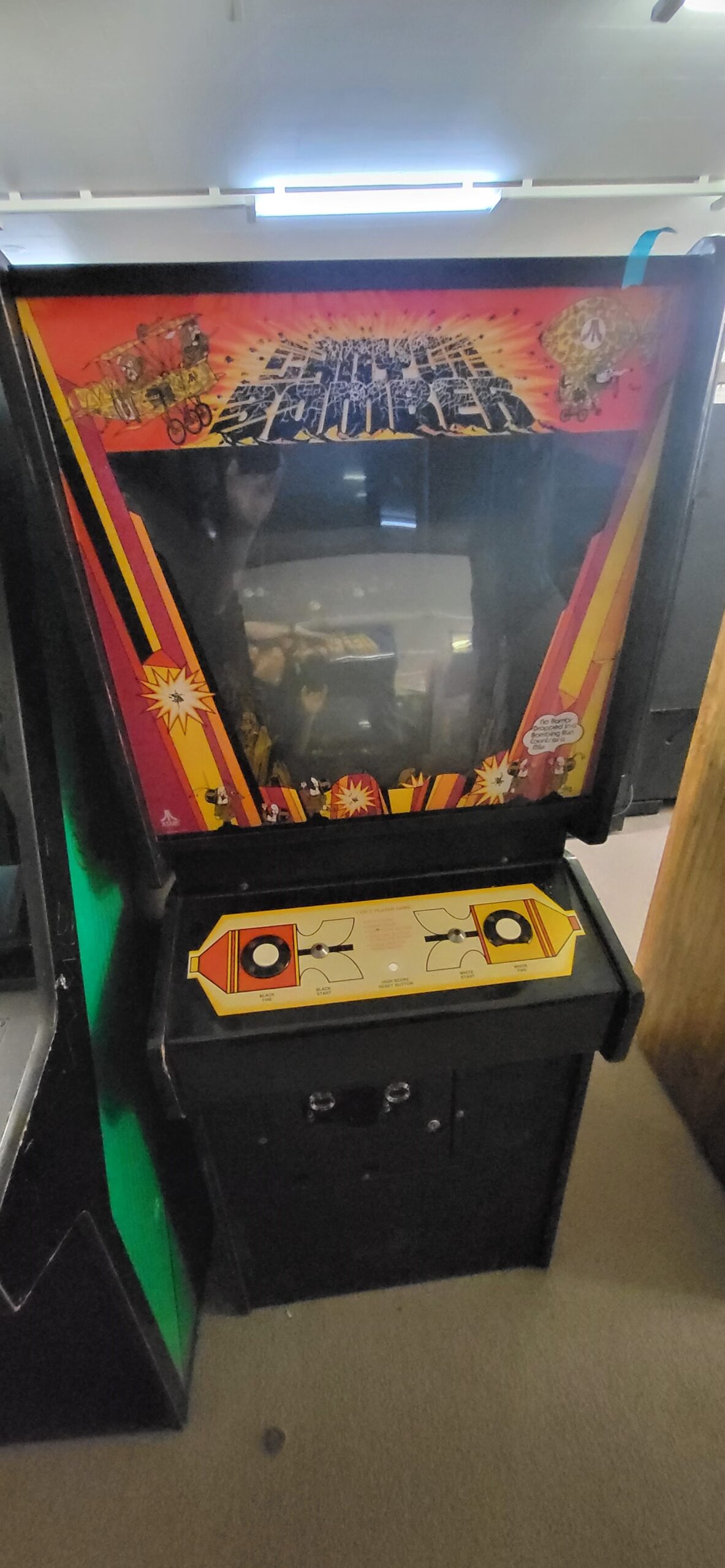
Canyon Bomber
Arcade / Atari, Inc. 177
Canyon Bomber is a classic arcade game developed and released by Atari in 1977. It is a simplistic but engaging two-player shooting game set in a canyon environment. Players control biplane-like aircraft, dropping bombs on numbered blocks along the canyon floor. The objective is to accumulate points by destroying as many blocks as possible within a limited time frame.
Created during the Golden Age of arcade gaming, Canyon Bomber was designed by Howard Delman and programmed by Atari co-founder Nolan Bushnell. Inspired by earlier black-and-white games like TV Basketball, Canyon Bomber marked Atari’s venture into the realm of competitive multiplayer gameplay. The straightforward mechanics and addictive nature of the game contributed to its success in the thriving arcade scene of the late 1970s.
Upon its release, Canyon Bomber received positive reviews for its innovative multiplayer gameplay and simple yet compelling mechanics. Players were drawn to its competitive nature and the strategic element of choosing the optimal blocks to bomb for maximum points. The game’s success in arcades solidified its place in gaming history.
Canyon Bomber spawned various adaptations and versions for different platforms, including home consoles and handheld devices. Its enduring popularity led to sequels and spiritual successors, further cementing its influence on the gaming industry. Notable related titles include Super Bomber (1978) and Canyon Bomber 2 (1983), both of which built upon the original concept.
Due to its early release date and widespread popularity, Canyon Bomber cabinets are relatively common in the collector’s market. However, pristine, well-maintained units may command higher prices. Rarity is often influenced by the cabinet’s condition, originality, and the presence of any unique features. As of the latest data, the estimated value of a working Canyon Bomber arcade cabinet ranges from a few hundred to a couple of thousand dollars.
Canyon Bomber runs on Atari’s custom hardware, featuring a monochrome display and simple sound effects. The hardware consists of a microprocessor, memory, and interface circuits. In terms of repairs, common issues include monitor malfunctions, control panel wear, and power supply problems. Replacement parts, including circuit boards, power supplies, and control components, are often available through specialized arcade machine suppliers, making restoration and maintenance feasible for enthusiasts. A comprehensive list of relevant parts can be obtained from Atari’s technical documentation and community forums dedicated to vintage arcade machine restoration.


